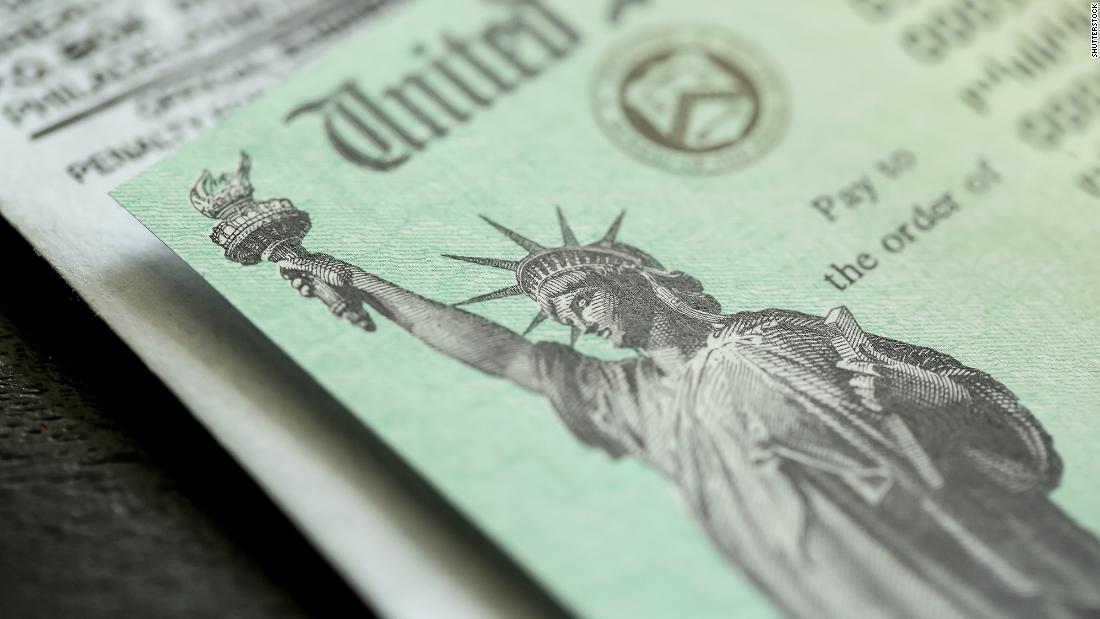The Senate package contains a wide range of proposals to help Americans still struggling with the economic fallout of the pandemic
Here’s what we know about how Americans could benefit from the Senate bill:
If your family makes less than $160,000 a year
The payments will phase out faster than they would have under the House version of the bill, which set the income caps at $200,000 for couples and $100,000 for individuals.
Individuals earning less than $75,000 would receive the full $1,400.
Married couples earning less than $150,000 a year would receive $2,800 — and families with children would be eligible for an additional $1,400 per dependent.
The payments will be calculated based on either 2019 or 2020 income. Unlike the previous two rounds, adult dependents — including college students — would be eligible for the payments.
If you are unemployed
Out-of-work Americans would get a federal weekly boost of $400 through August 29. Those enrolled in two key pandemic unemployment programs could also continue receiving benefits until that date.
Freelancers, gig workers, independent contractors and certain people affected by the coronavirus could remain in the Pandemic Unemployment Assistance program for up to 74 weeks and those whose traditional state benefits run out could receive Pandemic Emergency Unemployment Compensation for 48 weeks.
Senators had looked to reduce the federal enhancement to $300 a week and to extend the duration of the programs by another month. But those changes have not progressed.
Who is out of luck?
Workers being paid at or just above the federal minimum wage of $7.25 an hour will not see a boost in pay.
Here’s what’s in the House bill:
If you are hungry
Food stamp recipients would see a 15% increase in benefits continue through September, instead of having it expire at the end of June.
If you’re behind on your rent or mortgage
The legislation would send roughly $19.1 billion to state and local governments to help low-income households cover back rent, rent assistance and utility bills.
About $10 billion would be authorized to help struggling homeowners pay their mortgages, utilities and property taxes.
It would provide another $5 billion to help states and localities assist those at risk of experiencing homelessness.
If you have children
Along with receiving the stimulus payments described above, most families with minor children could claim a larger child tax credit for 2021. Low-income parents, in particular, would benefit.
The credit would also become fully refundable so more low-income parents could take advantage of it. Plus, households could receive payments monthly, rather than a lump sum once a year, which would make it easier for them to pay the bills.
Families paying for child care services could receive some additional aid. The bill would provide $39 billion to child care providers, some of which must be used to help families struggling to pay the cost.
If you’re sick
If you’re sick, quarantining or caring for an ill loved one or a child whose school is closed, the bill may provide your employer an incentive to offer paid sick and family leave.
Unlike Biden’s original proposal, the House bill would not require employers to offer the benefit. But it does continue to provide tax credits to employers who voluntarily choose to offer the benefit through October 1.
Last year, Congress guaranteed many workers two weeks pay if they contracted Covid or were quarantining. It also provided an additional 10 weeks of paid family leave to those who were staying home with kids whose schools were closed. Those benefits expired in December.
If you need health insurance
Enrollees would pay no more than 8.5% of their income towards coverage, down from nearly 10% now. Also, those earning more than the current cap of 400% of the federal poverty level — about $51,000 for an individual and $104,800 for a family of four in 2021 — would become eligible for help.
Lower-income enrollees could have their premiums eliminated completely, and those collecting unemployment benefits could sign up for coverage with no premiums in 2021.
Those who want to remain on their employer health insurance plans through COBRA could also get federal help. These laid-off workers would pay only 15% of the premium through the end of September, though that could still prove costly.
If you own a small business
The bill would provide $15 billion to the Emergency Injury Disaster Loan program, which provides long-term, low-interest loans from the Small Business Administration. Severely impacted small businesses with fewer than 10 workers will be given priority for some of the money.
It also provides $25 billion for a new grant program specifically for bars and restaurants. Eligible businesses may receive up to $10 million and can use the money for a variety of expenses, including payroll, mortgage and rent, utilities and food and beverages.
The Paycheck Protection Program, which is currently taking applications for second-round loans, would get an additional $7 billion and the bill would make more non-profit organizations eligible.
Another $175 million would be used for outreach and promotion, creating a Community Navigator Program to help target eligible businesses.
![]()


